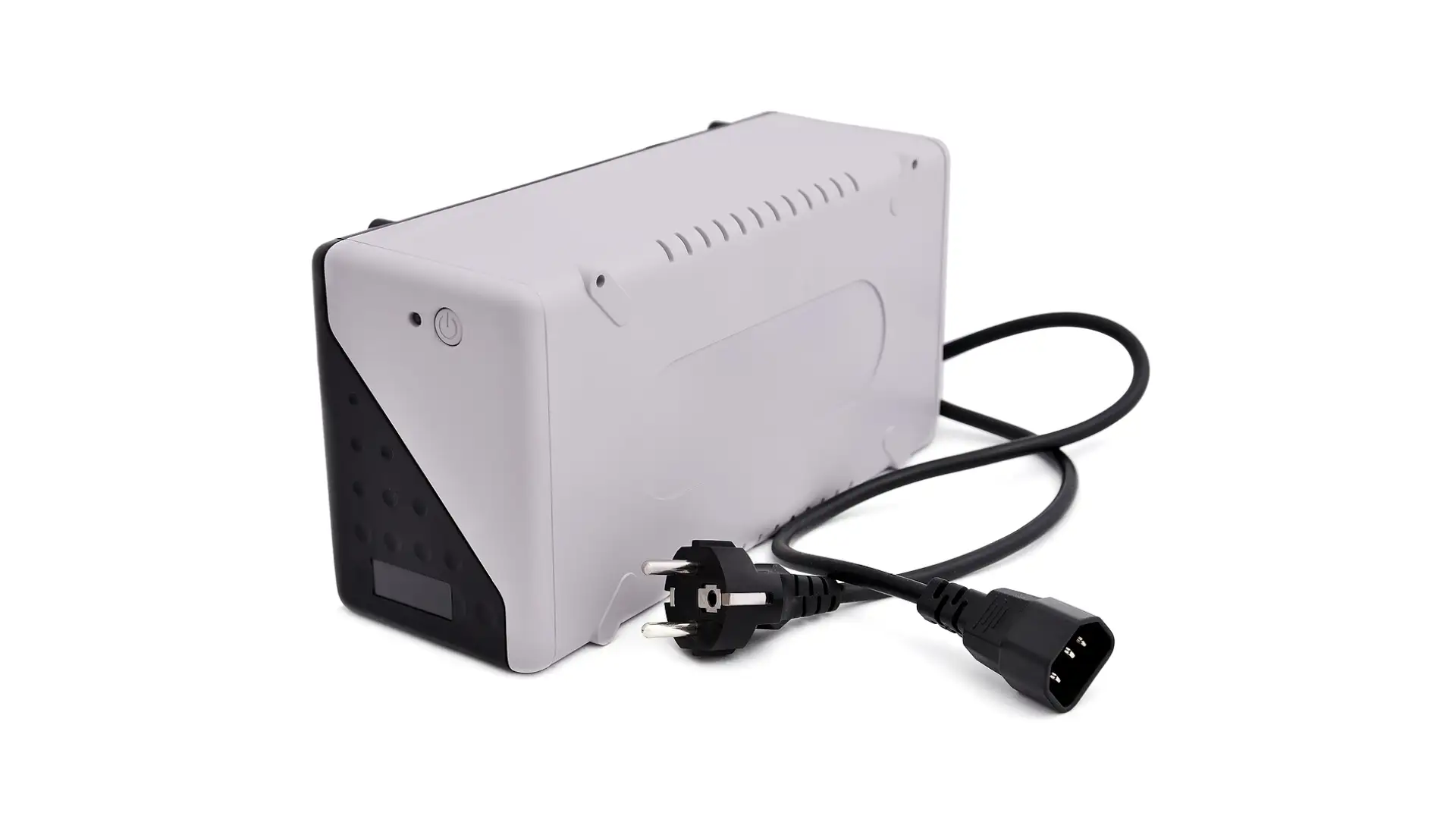
How To Test UPS Batteries
Uninterruptible Power Supply (UPS) systems are crucial components in safeguarding sensitive electronic devices and data against power disruptions.
However, like any other electrical equipment, UPS systems rely heavily on their batteries. Testing UPS batteries regularly is paramount to ensure their reliability during power outages.
In this comprehensive guide, we'll delve into the importance of testing UPS batteries, the methods involved, and best practices for optimal performance.
Why Testing UPS Batteries Matters
UPS batteries serve as the backbone of uninterruptible power systems. They provide critical power backup during outages, preventing data loss, equipment damage, and downtime.
However, over time, UPS batteries degrade due to various factors such as temperature fluctuations, age, and usage patterns.
Without proper testing and maintenance, these batteries can fail when needed most, compromising the integrity of the entire UPS system.

Signs of UPS Battery Degradation
Understanding the signs of UPS battery degradation is crucial for preemptive maintenance and ensuring uninterrupted power supply. Here are several indicators to watch out for:
- Reduced Runtime: One of the primary signs of deteriorating UPS batteries is a noticeable decrease in runtime during power outages. If your UPS system fails to sustain connected devices for the expected duration, it's likely that the batteries are losing their capacity to hold a charge.
- Frequent Failures: An uptick in UPS system failures or unexpected shutdowns could point to underlying battery issues. As batteries degrade, they may struggle to deliver consistent power output, leading to system malfunctions or abrupt shutdowns. Monitoring the frequency of these failures can provide insights into the overall health of the UPS batteries.
- Audible Alarms: Many modern UPS systems come equipped with audible alarms designed to alert users to potential battery problems. These alarms can indicate various issues, including low voltage, high temperature, or other anomalies detected within the battery system. Ignoring or silencing these alarms can exacerbate problems and increase the risk of system failure during critical moments.
- Visual Inspections: Conducting regular visual inspections of UPS batteries is essential for identifying visible signs of deterioration. Look for indicators such as corrosion on battery terminals, leaks around the casing, or swelling of the battery housing. Any of these visual cues may signal underlying issues that require immediate attention to prevent further degradation or damage.
- Testing Tools and Technologies: In addition to the above signs, leveraging advanced testing tools and technologies can provide a more comprehensive assessment of UPS battery health. Conductance testers, voltage meters, and impedance testers are some of the instruments used to evaluate battery performance accurately. Integrating these tools into routine maintenance procedures can help detect degradation early and prevent potential system failures.
Methods for Testing UPS Batteries
Testing UPS batteries involves various methods, each serving a specific purpose in assessing battery health and performance. Here are the primary techniques:
- Load Testing: Load testing involves simulating a power outage scenario to gauge how well UPS batteries perform under real-world conditions. This method provides insights into battery capacity, runtime, and overall health.
- Conductance Testing: Conductance testing measures a battery's ability to conduct electrical current. It's a quick and non-intrusive method that assesses battery health based on its internal resistance. Advanced conductance testers can provide accurate results without disconnecting the battery from the UPS system.
- Voltage Testing: Voltage testing is a straightforward method that measures the voltage output of UPS batteries. While it's less comprehensive than load testing, it can still reveal crucial information about battery voltage levels and potential issues.
- Impedance Testing: Impedance testing evaluates the internal resistance of UPS batteries. By measuring impedance, technicians can assess the condition of battery cells and detect early signs of degradation.

Top UPS Batteries: Choosing the Right Power Source for Your Needs
When it comes to selecting UPS batteries, choosing the right type and brand is crucial for ensuring reliable backup power and minimizing downtime.
Here are some of the top UPS batteries on the market, known for their performance, durability, and compatibility with a wide range of UPS systems:
- VRLA (Valve Regulated Lead Acid) Batteries
VRLA batteries are among the most commonly used UPS batteries due to their maintenance-free design and relatively low cost.
They come in two main varieties: AGM (Absorbent Glass Mat) and Gel batteries. AGM batteries offer high discharge rates and are suitable for applications with frequent power outages.
Gel batteries, on the other hand, provide better resistance to deep discharges and are ideal for long-duration backup scenarios.
- Lithium-ion Batteries
Lithium-ion batteries have gained popularity in recent years due to their high energy density, longer lifespan, and faster recharge times compared to traditional lead-acid batteries.
Although initially more expensive, lithium-ion UPS batteries offer significant advantages in terms of reduced total cost of ownership (TCO) over their lifecycle.
They are also more environmentally friendly and require less physical space, making them ideal for compact UPS installations.
- Nickel-Cadmium (NiCd) Batteries
NiCd batteries have been a staple in UPS applications for decades, known for their robustness, wide temperature tolerance, and resistance to overcharging.
While they have a higher initial cost compared to lead-acid batteries, NiCd batteries offer longer service life and better performance in extreme operating conditions.
They are particularly well-suited for mission-critical applications where reliability is paramount.
- Sealed Lead Acid (SLA) Batteries
SLA batteries, also known as sealed maintenance-free (SMF) batteries, are a type of VRLA battery commonly used in small to medium-sized UPS systems.
They are spill-proof, require minimal maintenance, and offer good energy density for their size. SLA batteries are available in various configurations, including AGM and gel, making them versatile options for different UPS setups.
- Silver-Zinc Batteries
Silver-zinc batteries are gaining traction in UPS applications due to their high energy density, safety, and eco-friendliness.
These batteries offer excellent performance in terms of energy efficiency and cycling capability, making them suitable for demanding UPS environments where space and weight constraints are critical factors.

Best Practices for Testing UPS Batteries
To ensure accurate results and prolong battery lifespan, adhere to these best practices when testing UPS batteries:
- Regular Testing Schedule: Establish a regular testing schedule based on manufacturer recommendations and industry standards. Quarterly or semi-annual testing is often sufficient for most UPS environments.
- Document Results: Maintain detailed records of battery test results, including dates, test methods used, and any abnormalities detected. This documentation helps track battery performance trends over time and facilitates proactive maintenance.
- Safety Precautions: Prioritize safety when conducting battery tests. Follow proper procedures, wear appropriate personal protective equipment, and adhere to relevant safety guidelines to mitigate risks of electric shock or chemical exposure.
- Environmental Considerations: Ensure UPS battery testing environments are well-ventilated and within recommended temperature ranges. Extreme temperatures can impact test accuracy and accelerate battery degradation.
- Interpretation of Results: Interpret test results holistically, considering factors such as battery age, historical performance, and environmental conditions. Consult with experienced technicians or refer to manufacturer guidelines for interpreting test outcomes accurately.
FAQs: Frequently Asked Questions About Testing UPS Batteries
1. How often should UPS batteries be tested?
UPS batteries should ideally be tested according to a regular schedule, typically recommended by the manufacturer or based on industry standards. Quarterly or semi-annual testing is common practice for most UPS environments. However, factors such as battery age, usage patterns, and environmental conditions may influence the frequency of testing.
2. Can UPS batteries be tested while the system is operational?
Yes, UPS batteries can often be tested while the system is operational. However, it's essential to exercise caution and follow proper procedures to avoid disrupting critical operations or compromising safety. Conductance testing and voltage testing are typically non-intrusive methods that can be performed without disconnecting the battery from the UPS system.
3. What are the risks associated with not testing UPS batteries?
Failing to test UPS batteries regularly can pose significant risks to critical operations and equipment. Without proper testing and maintenance, batteries may degrade over time, leading to reduced runtime, increased risk of system failures during power outages, and potential damage to sensitive electronic devices. Testing UPS batteries helps identify issues early, allowing for timely remediation and minimizing downtime.
4. How long does a UPS battery typically last?
The lifespan of a UPS battery can vary depending on factors such as battery chemistry, usage patterns, environmental conditions, and maintenance practices. On average, UPS batteries are designed to last between three to five years. However, proactive testing, maintenance, and proper care can extend battery lifespan and ensure optimal performance.
5. What are the advantages of conductance testing for UPS batteries?
Conductance testing offers several advantages for assessing UPS battery health. It is a quick and non-intrusive method that provides accurate insights into battery condition based on its internal resistance. Conductance testers can often perform tests without disconnecting the battery from the UPS system, minimizing downtime and disruption to operations. Additionally, conductance testing can detect early signs of battery degradation, allowing for proactive maintenance and replacement as needed.
6. Are there any specific safety precautions to follow when testing UPS batteries?
Yes, safety should be a top priority when testing UPS batteries. Ensure that technicians are properly trained and equipped with appropriate personal protective equipment (PPE) such as insulated gloves and safety goggles. Follow manufacturer guidelines and relevant safety standards when conducting tests. Additionally, be mindful of electrical hazards and potential chemical exposure risks, especially when handling lead-acid batteries.
7. How can I interpret the results of UPS battery tests effectively?
Interpreting UPS battery test results requires a comprehensive understanding of various factors, including battery age, historical performance, and environmental conditions. Consult with experienced technicians or refer to manufacturer guidelines for interpreting test outcomes accurately. Look for trends and anomalies in test results over time, and consider seeking professional assistance if unsure about the significance of specific findings.
8. Can UPS batteries be tested manually, or are automated systems necessary?
UPS batteries can be tested manually using handheld testers or multimeters, but automated testing systems offer several advantages, especially in large-scale or mission-critical environments. Automated systems can streamline the testing process, provide more comprehensive data analysis, and offer remote monitoring capabilities. However, the choice between manual and automated testing depends on factors such as budget, scale of operations, and specific requirements.
How To Test UPS Batteries Conclusion
continue reading
Related Posts
Uninterruptable Power Supply Company In my daily life, both personally […]
Uninterruptable Power Supplies In today's world, where technology keeps us […]
Uninterruptible Power Supply For Laptop In today's fast-paced digital world, […]



